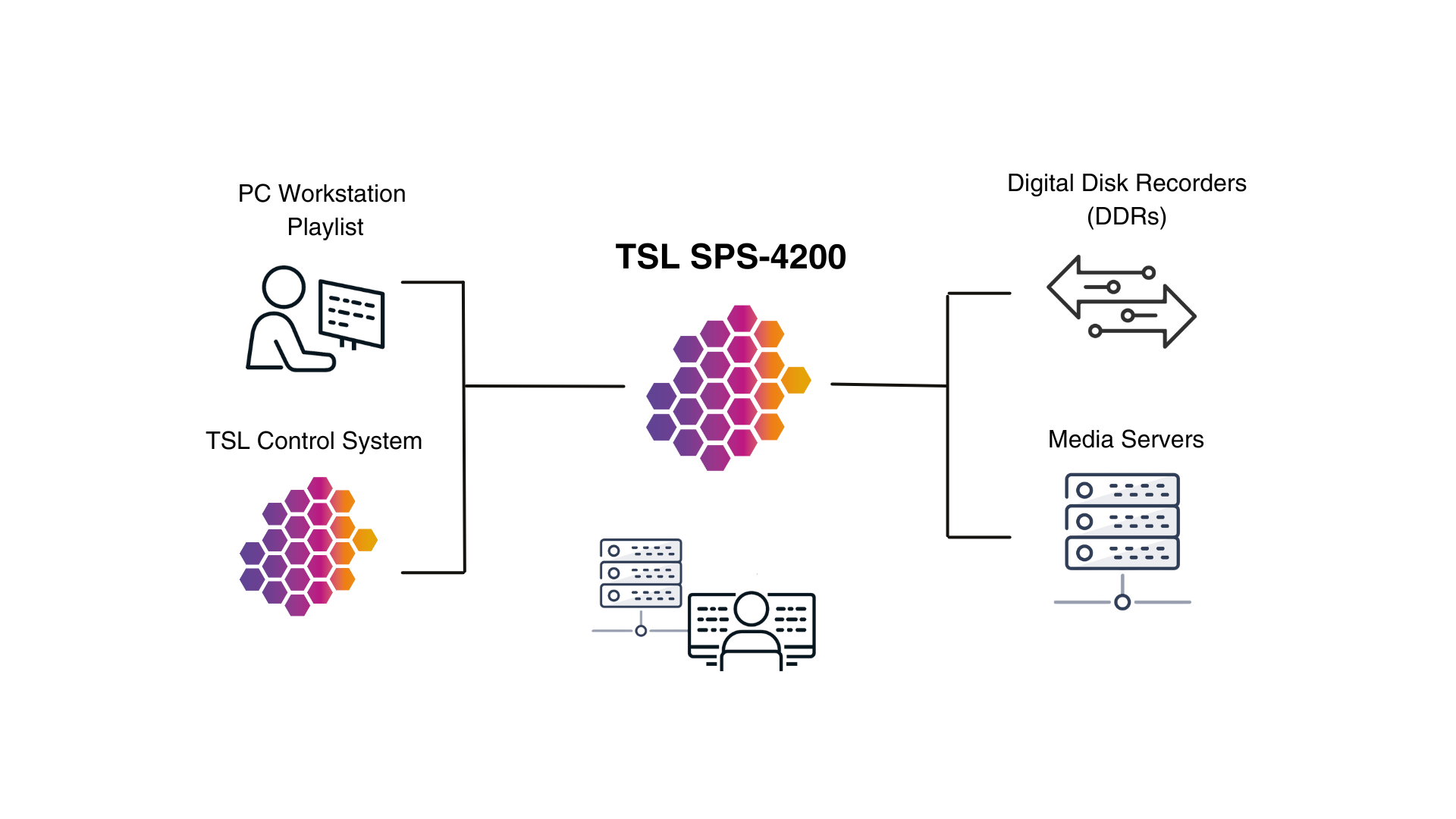TSL Control Solutions
.gif)
Scheduled actions and secondary events
One of the primary pillars of modern broadcast workflows is reducing the number of manual functions that operators are responsible for. Using scheduled actions and secondary events, production automation can be applied to many functions that happen on a daily or weekly basis at specific times of day and can be easily automated to free operators up for more important tasks.
Based on TSL Control, scheduled actions allow a facility to easily automate tasks such as router crosspoint changes, scheduled records, graphics recalls, automatic disaster recovery and failover with scheduled maintenance or GPI-based functions.
Actions can be scheduled using fixed weekly schedules or flexible daily schedules that can be created using provided tools or imported from an existing traffic system.
The result is that operators don’t have to worry about mundane daily tasks and can spend their effort on more important production tasks and reduce errors in their workflow.
Use Case: A prominent international broadcaster streamlines broadcast workflows with TSL Control
A prominent international broadcaster turned to TSL Control solutions to address streamlining its broadcast workflows. The primary objective was to reduce the manual labour involved in routine broadcast functions, which are essential but time-consuming. These functions, occurring daily or weekly at specific times, presented an opportunity for automation, thereby allowing operators to focus on more critical production tasks.
Utilising the scheduled actions feature, the facility was able to automate a range of tasks, including router crosspoint changes, scheduled records, and GPI-based actions.
This automation was achieved through both fixed weekly schedules and flexible daily schedules, which could be generated using the provided tools or imported from an existing traffic system. The implementation of this solution marked a significant shift in the broadcaster’s operational approach, moving from manual to automated processes for routine tasks and the outcome of integrating TSL's technology into their workflow was transformative.
A TSL controller processor, dedicated to running a list from scheduling software and controlling a Grass Valley NV9000 controller, was instrumental in automating scheduled actions and secondary events such as idents and lower thirds.

Operators were relieved from the repetitive burden of mundane daily tasks, enabling them to redirect their focus and energies towards more important aspects of production. This shift not only enhanced the efficiency of the broadcasting process but also significantly reduced the likelihood of human error.
This case study exemplifies the broadcaster's successful transition to a more efficient, automated workflow, demonstrating the potential of TSL's technology in modernising broadcast operations while ensuring flawless execution and precise timing of scheduled actions and secondary events.
Newsroom - MOS/ENPS/iNews
TSL’s Newsroom solution ties into newsroom computer systems to provide clip lists from non-MOS compliant devices and provide control actions from items in the run-down - it pairs perfectly with scheduled actions and secondary events to enhance automation of your news production.
- Media Object Server (MOS) gateway with ENPS / iNews interface
- Create run-down lists to playout media using a Windows PC without any additional newsroom computer system
- Expose the list of clips so that they can be added to the run-down, or add placeholders for clips to be ingested and played out later
- Bridge non-MOS compliant Digital Disk Recorder (DDR) and media server devices into a MOS environment
- Control media servers and DDR playout channels
- Integrate control actions into the playlist to control any
device connected to the TSL system - trigger alongside media playout
TSL Control SPS-4200 - Playout & Ingest Application
An affordable automated solution that provides the ability to create playlists for programme and commercial playout via a playlist editor interface.
- Read Digital Disk Recorder (DDR) clips to include in your playlist
- Create video playout/ingest channels with secondary control events such as graphics, bugs or lower thirds
- Uses time-based scheduling to playout content and events manually created ingest from traffic or other automation systems
- Includes As-Run logging of playout content and commercials
- Can be used as a low-cost primary playout automation system
- Can be used as a backup playout automation system during primary automation downtime
- Allows control over A/B playout chains
- Playlist editor application
- Vendor-agnostic solution to use equipment from multiple manufacturers
An example of a SPS-4200 system
An affordable automated solution that provides the ability to create playlists for programme and commercial playout via a playlist editor interface.
- Playlist creation tool application
- TSL control processor with redundant power supplies
- Video server protocol
- Switcher protocol
- Router protocol


